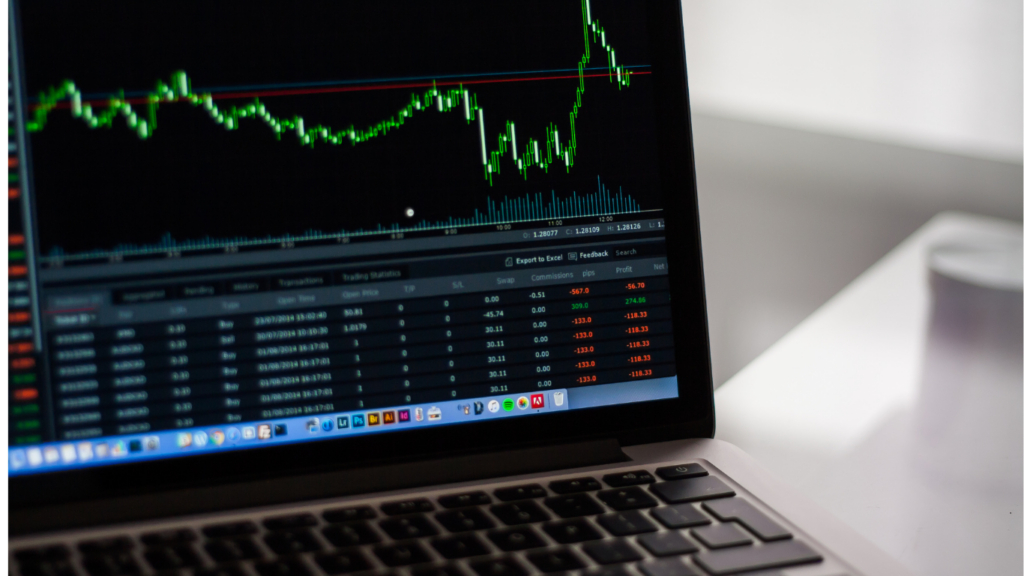Understanding U.S. Monetary Policy
The Role of the Federal Reserve
As an expert in global markets, I can shed light on the pivotal role the Federal Reserve plays in determining U.S. monetary policy.
The Federal Reserve, often referred to as the Fed, is the central banking system of the United States.
It is responsible for controlling the country’s monetary policy by influencing interest rates and regulating the money supply.
By adjusting these key factors, the Fed aims to achieve:
- stable prices
- maximum sustainable employment
- moderate long-term interest rates
Understanding the Federal Reserve’s role is crucial as its decisions have far-reaching effects on both domestic and international economies.
Key Tools of Monetary Policy
Delving into the intricacies of U.S. monetary policy, it’s essential to examine the key tools utilized by the Federal Reserve to implement its monetary policy objectives.
The Fed employs several instruments to influence economic conditions effectively. These tools include open market operations, discount rate changes, and reserve requirements.
Open market operations involve the buying and selling of government securities to adjust the money supply in the economy.
Changes in the discount rate, the interest rate charged to commercial banks, can impact borrowing and spending.
Additionally, modifying reserve requirements, the amount of funds banks must hold in reserve, can alter the availability of credit.
By utilizing these tools strategically, the Federal Reserve maneuvers the economy towards its desired objectives.
The Unexpected Shift: Analyzing Recent Changes
What Sparked the Shift?
The recent unexpected shift in U.S. monetary policy was triggered by unanticipated economic data indicating a surge in inflation rates beyond the Federal Reserve’s target.
This uptick in inflation raised concerns about the sustainability of the current economic growth trajectory, prompting the Fed to reevaluate its policy stance.
As a result, the central bank opted to recalibrate its approach to ensure price stability and sustainable economic expansion.
Immediate Effects on the U.S. Economy
The immediate effects of this policy shift on the U.S. economy were palpable, with financial markets experiencing heightened volatility in response to the Fed’s announcement.
Stock prices fluctuated, bond yields surged, and the U.S. dollar exhibited increased strength against major currencies.
Moreover, businesses and consumers alike adjusted their expectations regarding future interest rates and investment decisions, reflecting the profound impact of the monetary policy change on the broader economic landscape.
Global Markets’ Reaction to U.S. Policy Changes
Asian Markets’ Response
Asian markets swiftly adjusted to the unexpected shifts in U.S. monetary policy.
Following the announcement of the change in the Federal Reserve’s stance to combat inflation, Asian stock markets experienced significant fluctuations.
Investors in countries like Japan, South Korea, and China closely monitored the U.S. policy changes, leading to both increased volatility and cautious optimism in the region.
European Markets’ Impact
In Europe, the impact of the U.S. policy changes reverberated across various financial sectors.
Countries such as:
- Germany
- France
- United Kingdom
saw fluctuations in their stock markets and bond yields in response to the new direction taken by the Federal Reserve.
European investors recalibrated their strategies to adapt to the evolving conditions influenced by the U.S. monetary policy adjustments.
Emerging Economies and the U.S. Dollar
Emerging economies felt the effects of the U.S. policy shifts, particularly concerning the strength of the U.S. dollar.
Countries in Latin America, Africa, and Asia closely observed the fluctuations in the dollar’s value following the Federal Reserve’s actions.
The changing dynamics of the U.S. currency influenced trade relationships and economic prospects for emerging markets, prompting adjustments in foreign exchange reserves and monetary policies to mitigate potential risks.
Implications for International Trade and Investment

Exchange Rates and Foreign Investment
Analyzing the impact of unexpected shifts in U.S. monetary policy on international trade and investment, I explore how fluctuations in the U.S. dollar value result in changes in exchange rates.
This can influence the competitiveness of exports and imports, affecting the balance of trade for various countries.
For example, a stronger U.S. dollar can make American goods more expensive for foreign buyers, potentially lowering demand and impacting export-oriented industries in the U.S. Conversely, a weaker dollar can boost U.S. exports but may lead to higher import costs, impacting consumer prices and the overall economy.
When it comes to foreign investment, shifts in U.S. monetary policy can influence investor sentiment and capital flows across borders.
Investors closely monitor interest rate decisions by the Federal Reserve as they impact the return on investments in the U.S. market.
A rise in interest rates may attract foreign investment seeking higher returns but could also lead to capital outflows from emerging economies back to the U.S. as investment becomes more profitable and less risky.
Global Trade Agreements and U.S. Policy
Examining the interplay between global trade agreements and U.S. monetary policy shifts, I uncover how changes in U.S. policies can affect international trade dynamics.
The U.S. has a significant role in global trade, and alterations in its monetary policy can influence trade negotiations, tariffs, and trade flows with other countries.
For instance, a shift towards protectionist policies in the U.S. can lead to trade disputes and impact the stability of global trade agreements, affecting the movement of goods and services worldwide.
Moreover, U.S. monetary policy changes can also impact trade partners’ economies, as shifts in interest rates and currency values can affect the cost of borrowing, export competitiveness, and overall economic performance.
Countries with strong trade ties to the U.S. closely monitor these policy changes to adapt their trade strategies accordingly and mitigate potential risks to their economies.
Understanding the implications of U.S. monetary policy on global trade agreements is crucial for businesses and policymakers navigating the complex landscape of international trade.
Corporate Sector’s Adaptation to New Monetary Policy
1. Risk Management Strategies
In adapting to the new monetary policy changes following the unexpected shift in the U.S., corporations are swiftly implementing robust risk management strategies.
Enhancing financial risk assessment models and stress-testing frameworks is crucial.
I’ve seen companies recalibrating their risk exposure metrics to account for heightened market volatility.
Furthermore, diversifying investment portfolios has become a priority.
Companies are spreading their investments across different asset classes to mitigate risks associated with fluctuating stock prices and bond yields.
Additionally, many corporations are revising their hedging strategies to shield themselves from adverse currency movements.
By hedging against potential fluctuations in the value of the U.S. dollar, businesses aim to stabilize their international transactions and protect their bottom line.
2. The Shift’s Impact on Global Supply Chains
The impact of the monetary policy shift on global supply chains has been significant.
I’ve observed disruptions in supply chain dynamics as companies adjust to the new economic environment.
Manufacturers are reassessing sourcing strategies and production locations to optimize costs and maintain efficiency.
Moreover, logistics and transportation sectors are experiencing changes.
The fluctuating U.S. dollar value is influencing shipping costs and import-export dynamics, prompting companies to streamline their supply chain operations to offset these effects.
Furthermore, the shift has catalyzed a reevaluation of inventory management practices.
Firms are rethinking inventory levels and safety stock to adapt to fluctuating demand patterns and ensure continuity in their supply chains.
Overall, the corporate sector’s adaptation to the new monetary policy involves a comprehensive reassessment of risk management practices and supply chain strategies to navigate the evolving economic landscape effectively.
Investors’ Perspective
Stock Market Volatility and Investment Decisions
In examining stock market volatility following unforeseen shifts in U.S. monetary policy, it’s crucial for investors like me to make informed investment decisions.
Sudden changes in policies can lead to rapid fluctuations in stock prices, impacting investment portfolios.
To navigate this volatility, I focus on diversifying my investment portfolio across various asset classes.
This strategy helps mitigate risks associated with market instability, ensuring a more balanced approach to investing.
Long-Term Investment Strategies Amidst Uncertain Policy
When faced with uncertain policy environments due to unexpected shifts in U.S. monetary policy, I prioritize implementing long-term investment strategies.
By focusing on the long term, I can better weather short-term market fluctuations caused by policy changes.
Engaging in thorough research and maintaining a diversified investment portfolio are key components of my approach.
This allows me to stay resilient in the face of evolving policy landscapes, ensuring that my investments align with my long-term financial goals.



 Patrick Dale (Author & Investigative Reporting Lead)
Patrick Dale is an author and Investigative Reporting Lead at The Vital Insight Hub. With a talent for uncovering hidden stories and digging deep into social and economic issues, Patrick heads the investigative team, bringing critical stories to light. His passion for truth and justice drives his work, making him an essential part of the newsroom’s commitment to impactful journalism.
Patrick Dale (Author & Investigative Reporting Lead)
Patrick Dale is an author and Investigative Reporting Lead at The Vital Insight Hub. With a talent for uncovering hidden stories and digging deep into social and economic issues, Patrick heads the investigative team, bringing critical stories to light. His passion for truth and justice drives his work, making him an essential part of the newsroom’s commitment to impactful journalism.
